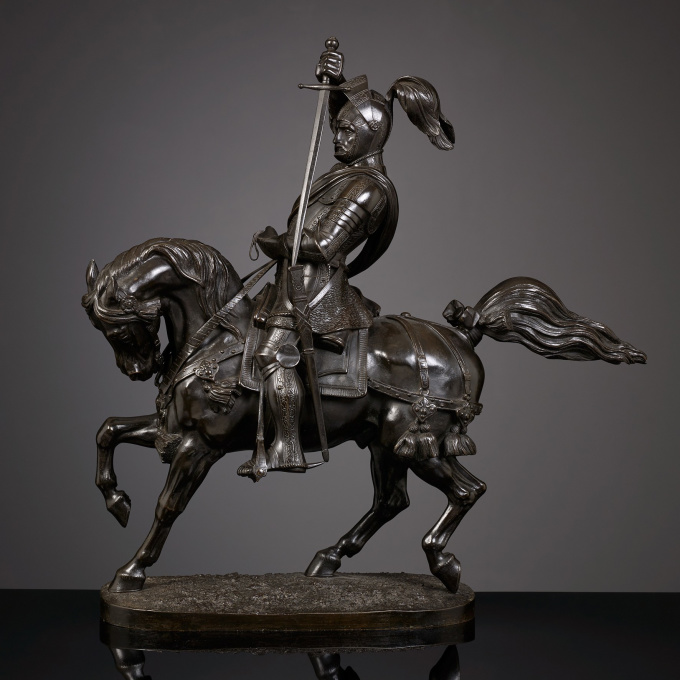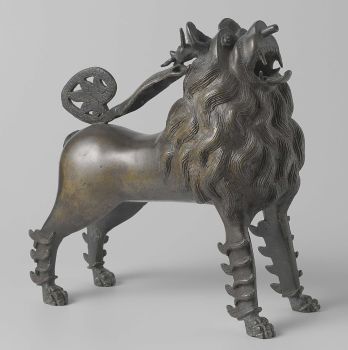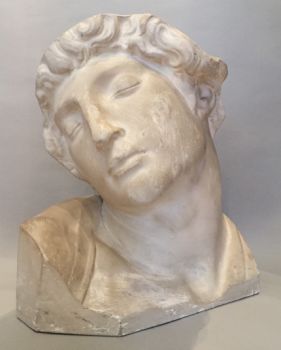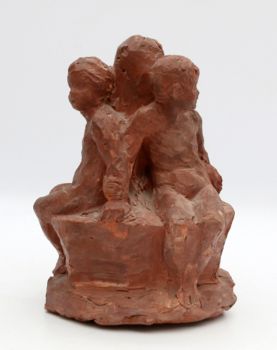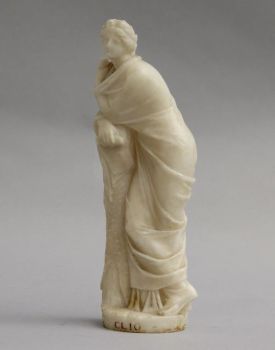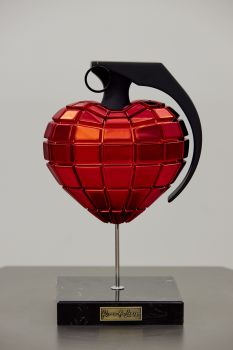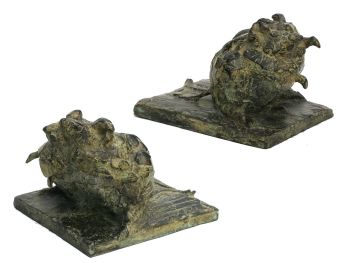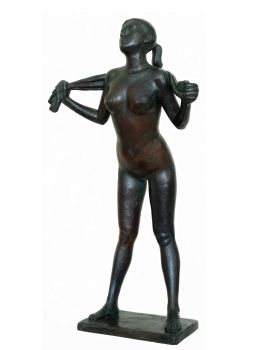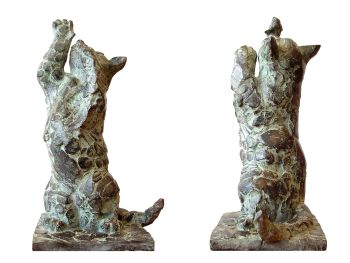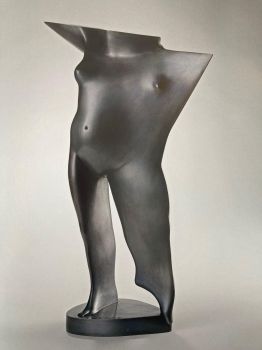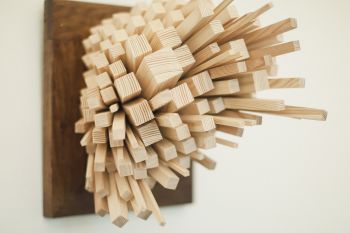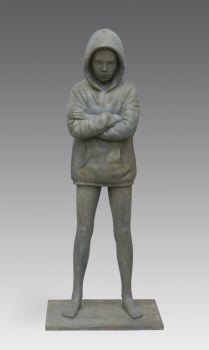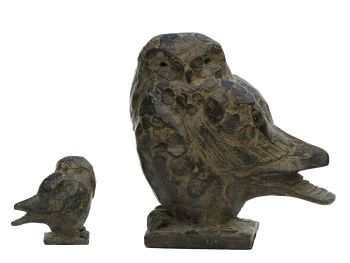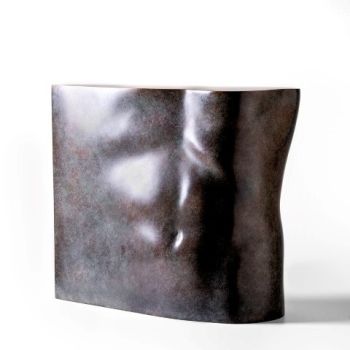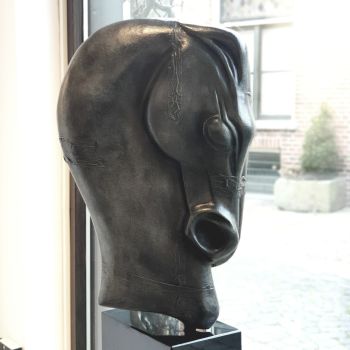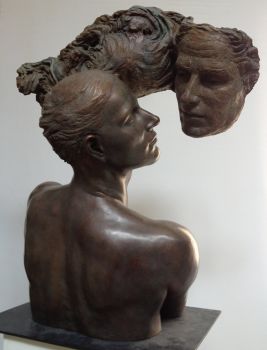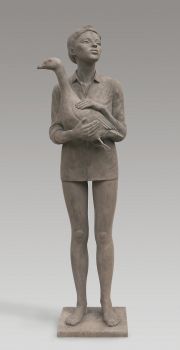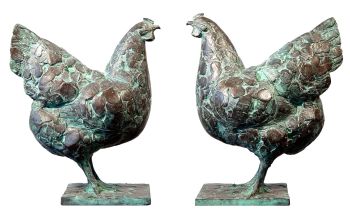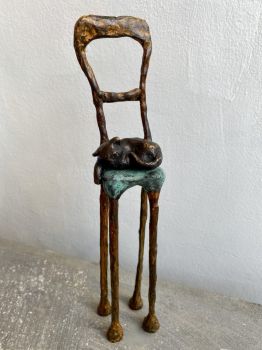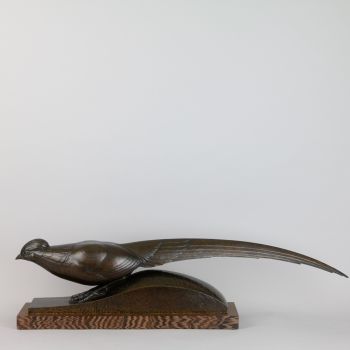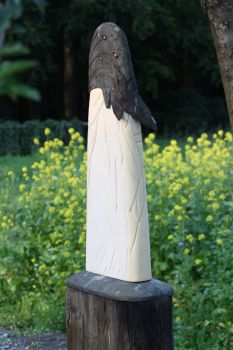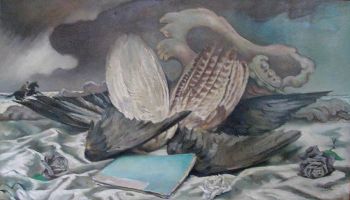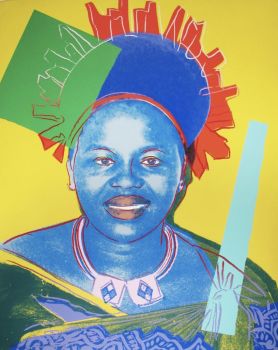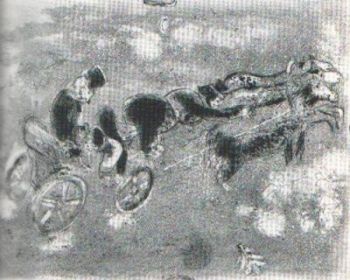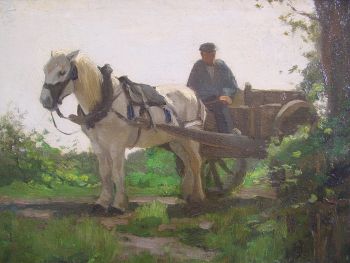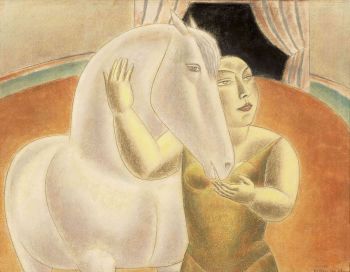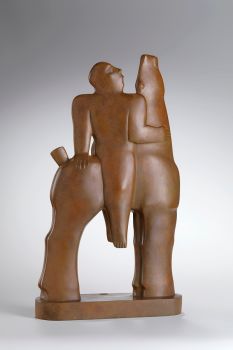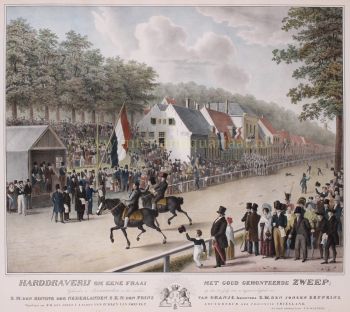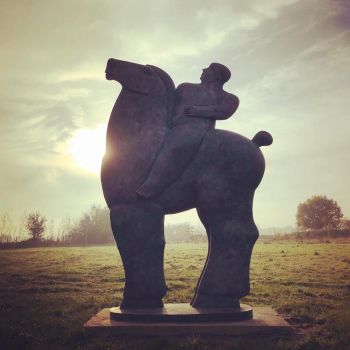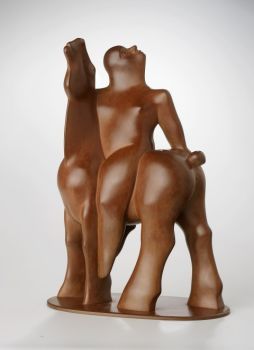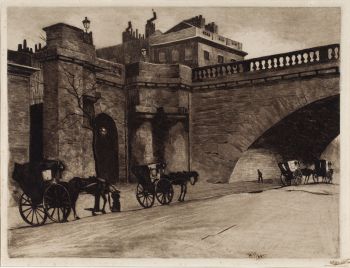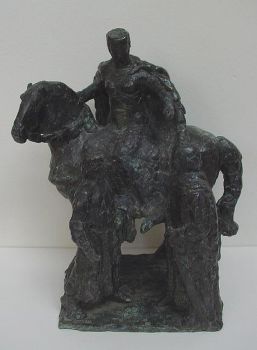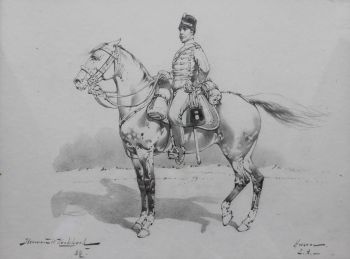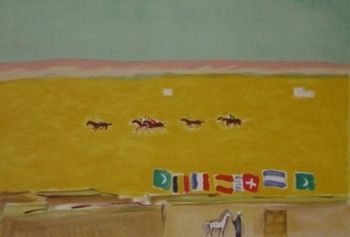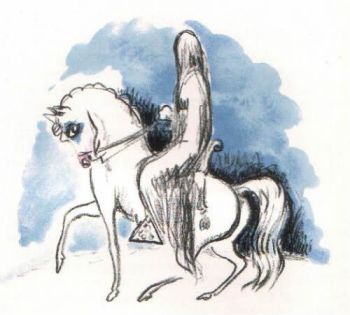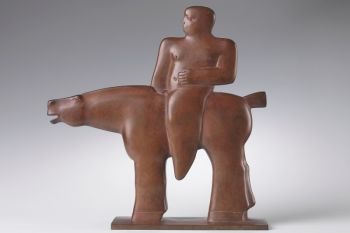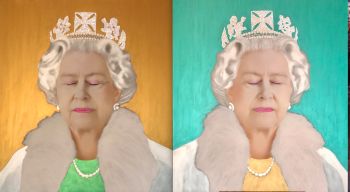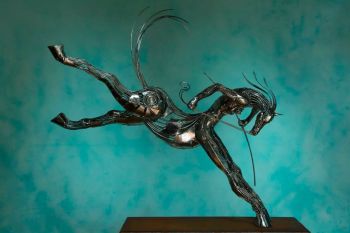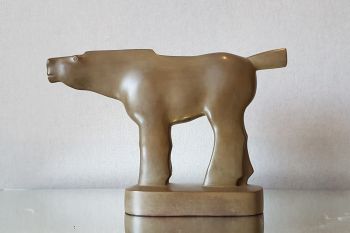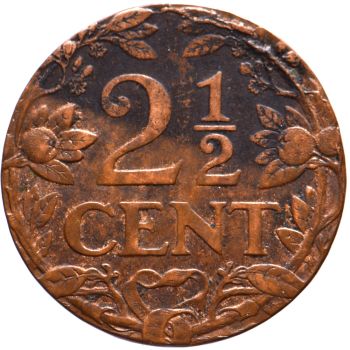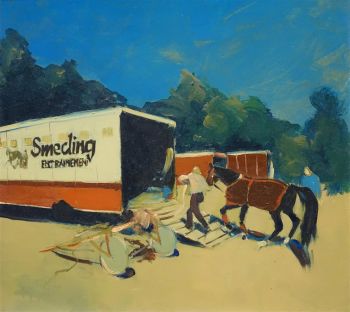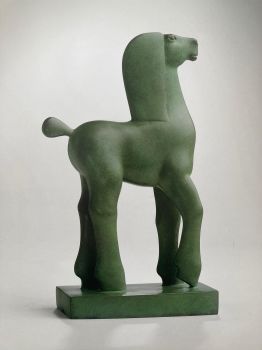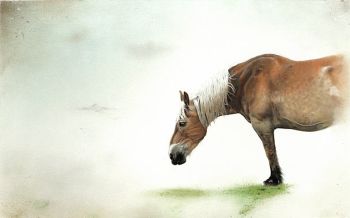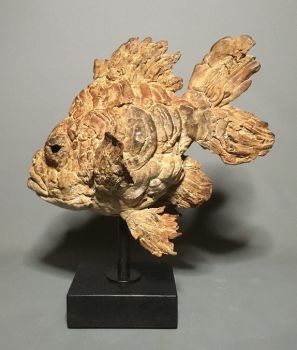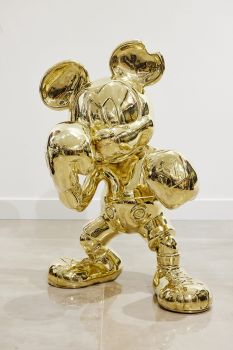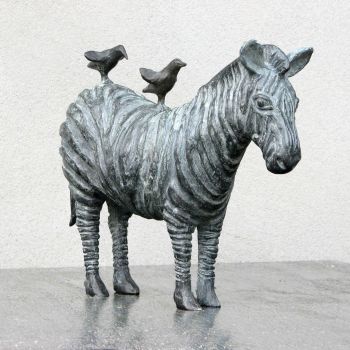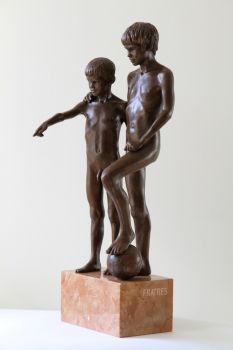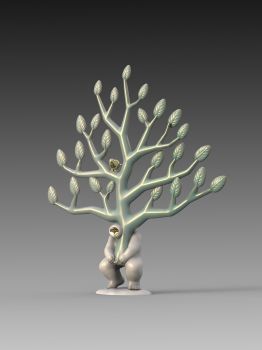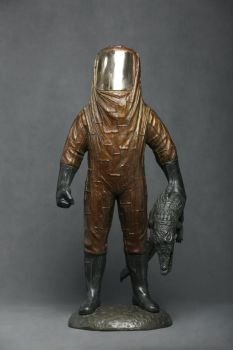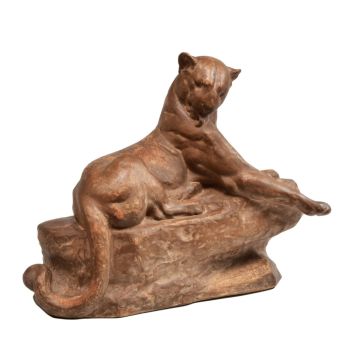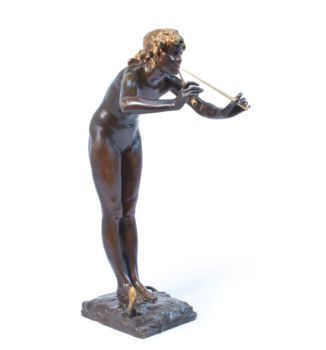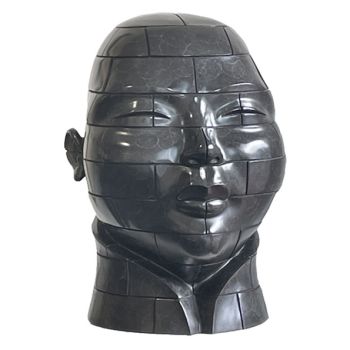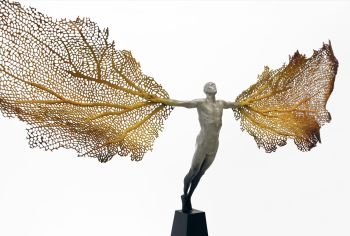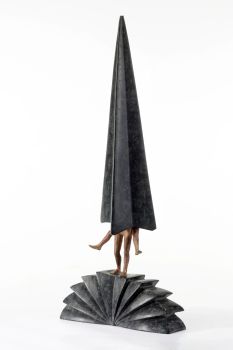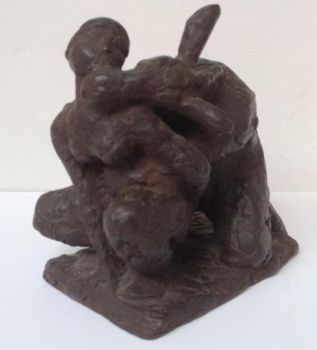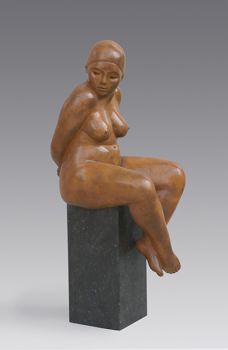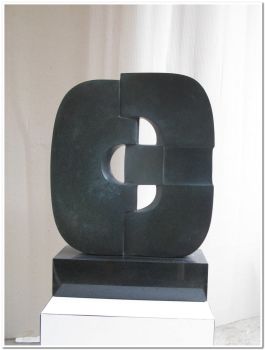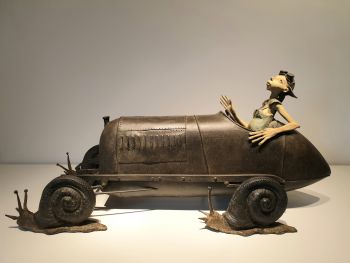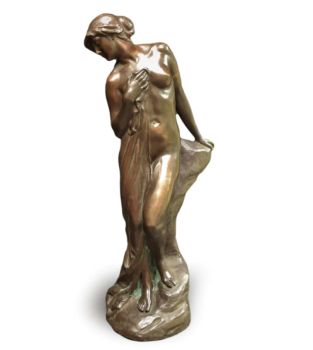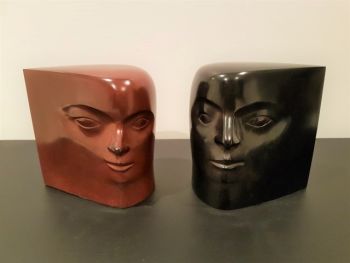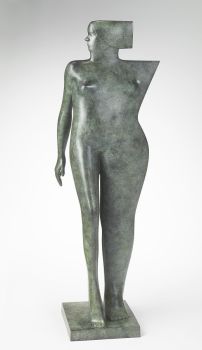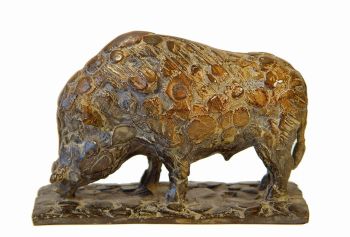Equestrian Statue of Emanuel Philibert de Savoye 1836 - 1840
Carlo Marochetti
BronzeMetal
56 ⨯ 55 ⨯ 26 cm
Currently unavailable via Gallerease
- About the artworkEmanuel Philibert
Emanuel Philibert duke of Sovay, also called Testa di Ferro (Chambéry 1528 – 1580 Turin), was the only child of Charles III of Savoy and his wife Beatrix of Portugal that survived childhood. Emanuel Philibert succeeded Charles III after his death. In 1536, though, he lost his land under the French occupation. Nevertheless, Emanuel Philibert stayed loyal to the house of Habsburg. In 1551 he lead the defense of Barcelona, withstanding the French and earning his sobriquet “Ironhead”. Later in 1551 Emanuel Philibert was awarded the title duke of Savoy, despite the fact that he did not have a duchy. From 1555 to 1559 Emanuel Philibert was governor of the Austrian Netherlands, in service of his cousin Filips II. Emanuel Philibert duke of Savoy was a contemporary of William of Orange.
Carlo Marochetti (1805 – 1867)
Carlo (Charles) baron Marochetti was born in Turin in 1805, but grew up in Paris as a French citizen. After he finished the Lycée Napoleon Marochetti was educated at the École des Beaux Arts. He also spent some time in Rome. His first tutors in sculpture were François Bosio and Antoine-Jean Gros. From 1829 onwards Marchetti is gaining appreciation. Famous monuments of Marochetti can be found in England (among others, Richard Lionheart near Westminster), France (Théophile de la Tour d’Auvergne in Carhaix) and Italy (Emanuel Philibert on the Piazza san Carlo in Turin).
The commission for the equestriam statue of Emanuel Philibert came from king Charles Albert of Savoy, as a tribute to his ancestor, and to commemorate the military audacity of his dynasty. Marochetti made the statue in 1838 in Paris. It was his first major assignment and his first equestrian statue. Before the statue was put on its intended position in Turin, it was exhibited on the courtyard of the Louvre. This work was the breakthrough of Marochetti as a sculptor. After this assignment others followed, like the equestrian statues of the Duke of Wellington and Richard Lionheart.
The popularity of the statue of Emanuel Philibert led to the production of reduced copies, like this one, as soon as 1838. - About the artistCarlo Marochetti was born in Turin but brought up in Paris as a French citizen. His first teachers were François Joseph Bosio and Antoine-Jean Gros in Paris. There his statue of A Young Girl playing with a Dog won a medal in 1829, and his Fallen Angel was exhibited in 1831. Between 1822 and 1830 he studied chiefly in Rome. From 1832 to 1848 he lived in France.
In Paris, he made a panel representing the Battle of Jemappes for the Arc de Triomphe, the altar in the Church of the Madeleine and the tomb of Vincenzo Bellini in Père Lachaise Cemetery. While living in Paris, he also created the equestrian monument of Emmanuel Philibert which stands in a central piazza in Turin.
He followed the French king Louis-Philippe into exile in the United Kingdom after the fall of the July monarchy in 1848.
He spent the greater part of his time from then until his death in London. He lived in Onslow Square, and had a large studio, and his own foundry, nearby in Sydney Mews. Among his chief works were statues of Queen Victoria, Colin Campbell, 1st Baron Clyde (erected 1867 in Waterloo Place), and King Richard the Lionheart. The Richard Coeur de Lion (statue) was displayed in the Great Exhibition, and a bronze copy was made in 1860 to be displayed in front of the Palace of Westminster, where it has remained ever since.
His statue of Robert Stephenson (installed 1871) still stands in the forecourt of Euston Station. He made a bust of William Makepeace Thackeray for Westminster Abbey. He also created the marble recumbent effigies for the tomb of Queen Victoria and Prince Albert in the Royal Mausoleum at Frogmore in Windsor Great Park and the statue on the Duke of Wellington Commemorative Column outside Stratfield Saye House.
From 1864 he collaborated with Sir Edwin Landseer on the four bronze lions to be placed around the base of Nelson's Column in Trafalgar Square, and cast them at his foundry.
As a favourite sculptor of Queen Victoria, he was commissioned to make the seated figure of Prince Albert for the Albert Memorial in Kensington Gardens. However the first version was rejected by the architect of the monument, Sir George Gilbert Scott, and Marochetti died before a satisfactory second version could be completed.
Marochetti was created a baron by the King of Sardinia and was also a chevalier of the Legion of Honour. He was elected an associate of the Royal Academy 1861 and a full academician in 1866.
Artwork details
Category
Subject
Material & Technique
Colour
Related artworks
- 1 - 4 / 24
Willem Witsen
Waiting carriages in front of Waterloo Bridge1850 - 1900
Price on requestKunsthandel Pygmalion
1 - 4 / 24- 1 - 4 / 24

